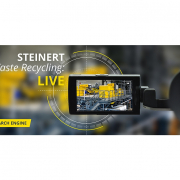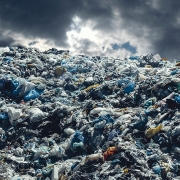USA: Research on Enhanced Biological Phosphorus Removal
The Water Research Foundation (WRF) in the USA has selected a team of utilities, consulting firms and universities to promote standard use of sustainable enhanced biological phosphorus removal solution.
As phosphorus limits permitted in wastewater effluent shrink to protect drinking water sources, a nationwide research effort has started work “to advance implementation of a leading-edge treatment technology for phosphorus removal and recovery”. According to Black & Veatch – a global engineering, procurement, construction (EPC) and consulting company – which is heading the group, enhanced biological phosphorus removal (EBPR) has been adopted by communities worldwide to meet water quality requirements. “Yet understanding of the process’s ecology, functionality and optimal design remains incomplete.” The team would be completing research to establish a standard approach to EBPR’s application.
With a value of 1.3 million US-Dollar plus approximately 1.2 million US-Dollar from in-kind and cost-share contributions, the WRF research project is focused specifically on the application of an EBPR configuration called “Side Stream Enhanced Biological Phosphorus Removal, or S2EBPR”, Black & Veatch outlined the project in August this year. “The configuration uses anaerobic conditioning of activated sludge biomass to promote stability and consistent performance in the biological nutrient removal (BNR) process. The objectives of this project are to develop design guidelines, operational tool recommendations, and modeling best practices for S2EBPR facilities.”
For this purpose, a blue-ribbon team has been assembled to complete the research over 30 months. The team includes five consulting firms: Black & Veatch, CDM-Smith, Hazen & Sawyer, Brown and Caldwell, and Gert P Environmental ApS. Five universities are participating including Cornell, Washington, Northwestern, Northeastern, and Aarhus. Utility partners include 16 companies from the USA and one from Canada. “Our industry is ready for a universally recognized and user-friendly approach to EBPR,” Leon Downing, Principal Process Engineer and Innovation Leader at Black & Veatch, is quoted. “By promoting improved performance and process stability in EBPR, this research will greatly help utilities minimize their chemical and energy costs as well as achieve very low concentrations of phosphorus in their effluent.” Phosphorus is essential to plant and animal growth. Yet the nutrient becomes a pollutant when deposited in waterways in excessive amounts via wastewater discharges and stormwater runoffs, fueling toxic algal blooms and contributing to hypoxic dead zones that threaten ecosystems and public health. Effective removal of phosphorus during wastewater treatment is gaining more and more scrutiny from communities and regulators. EBPR is also the precursor to enabling many of the technologies currently utilized for phosphorus, as well as carbon/energy recovery from wastewater.
(GR 32019, Page 30)








